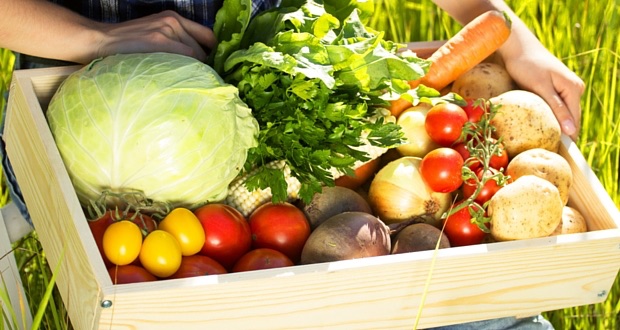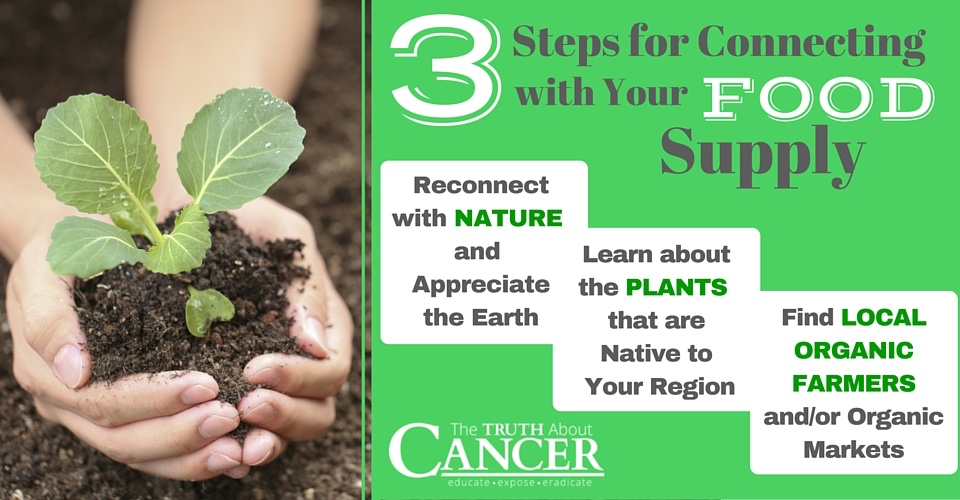How can we put our trust in Monsanto − a company specializing in poison and political manipulation − to make our food? We have become disconnected from our environment by putting too much trust in biotech companies, big agriculture, and big food corporations over the last 50 years. All the while we’ve relied on government agencies to protect our interests. Sadly, it’s become readily apparent that this approach to food isn’t working.
The current spike in chronic disease, including cancer and obesity, is our last chance wake-up call to reverse the devastating effects of the Monsanto GMO monopoly on our food. The whole earth groans from the abuse of corporate greed and time is running out. We must make a change… our health and the health of our planet depends on it!
Is Organic Gardening the Answer to Monsanto GMO?
The easiest option to ensure you’re not eating genetically modified foods (aka “frankenfoods”) created by big biotech companies such as Monsanto is to grow or purchase organic food. Organic food by definition is not genetically modified and generally uses far less pesticides than conventionally-grown produce.
However, there’s more to organic farming than meets the eye. And how do you know if your food is really organic? Check out the following tips from an organic farmer on how to connect with your food source and even grow organic produce yourself.
Nir farms a two hectare field (approx 5 acres) in the southern Galilee region of Israel. He has some unique insights on growing strong, nutritious, vibrant plants in rich fertile soil that can be applied to home gardens. After all, if your food isn’t healthy… your body won’t be either.
3 Steps for Connecting With Your Food Supply
Step #1 – The first thing is to reconnect with nature. Spend some time in the forest, in the wild meadows, by rivers and oceans, and notice the nature. Listen and watch to see what is going on so you can recognize the norm for living things. This helps to prepare your mind and attitude to appreciate the earth. We live with nature. Therefore it is vital to remember how to respect and enjoy it so we can get the best from it.
Step #2 – Learn about the plants that grow naturally in your region. In reference to gardening or farming, find out the season for the plants that are edible for humans and animals.
Step #3 – Then find local farmers that are not using pesticides or herbicides and get your fruits and vegetables directly from them (tip: search online for Community Supported Agriculture + your area). If you can’t get everything you need directly from the farmer, then use the farmers markets and the organic section of grocery stores.Always buy produce that’s as fresh as possible.
Tips for Growing an Organic Garden
Growing your own food is the ultimate solution for an anti-cancer diet full of the freshest, highest quality food possible. No matter how much or how little space you have you can also try growing some things yourself. Sprouts, ginger, and herbs are a great place to start.
If you have space in your yard for a garden, here are some tips from Nir on growing organic crops. You can apply these farming principles to your own organic garden.
- Prepare the soil bit by bit – don’t expect to have everything perfect all at once. It takes years to make a really good field or garden. Like a fine wine, the longer it matures, the better. Keep adding organic matter to a compost pile away from the growing area so the bugs can do their work without interfering with the vegetables. Then add this compost after a year of maturation to your field/garden.
- Give and take – for everything you take from the soil you have to give back. Rotate your plots and grow winter manure crops that you plow under in the spring for the purpose of enriching your soil.
- Don’t grow the same intensity of vegetables in the same plot each season – grow less demanding vegetables after you grow demanding ones. Also grow soil enriching crops in between demanding crops.
- It is not necessary to spray organic pesticides when you get into the seasonal rhythms – plants grown in their season are equipped to fight disease, repel insects, and resist the weather. Example: a fall crop grown in the summer is going to spend all its energy trying to survive. The pests sense this and come to devour the plant.
Where to Find the Best Seeds for Your Organic Garden
If you’re planting a garden of any type, be sure to use seeds that are non-GMO and organic. A great resource to find producers of heirloom/ non-GMO/ organic seeds around the world is: http://www.off-grid.info/food-independence/heirloom-seed-suppliers.html.
Remember that every little step taken to improve your health adds up to a better community and world. When you grow your own produce and/or buy your vegetables and fruits from the local farmers that you trust, you can see what they are doing to the plants and soil. This helps to protect your health… and our earth.
Without people like you who truly care about helping others, we wouldn’t matter. Please share this with friends and loved ones to spread the truth.
Article Summary
We have become disconnected from our environment and food supply by putting too much trust in biotech companies such as Monsanto, big agriculture, and big food corporations over the last 50 years.
The easiest option to ensure you’re not eating genetically modified foods (GMOs) is to grow or purchase organic food. Organic food by definition is not genetically modified and generally uses far less pesticides than conventionally-grown produce.
3 Steps for Connecting With Your Food Supply:
- Step #1 – Reconnect with nature and learn to appreciate the earth
- Step #2 – Learn about the types of plants that are native to your region
- Step #3 – Find local organic farmers and/or organic markets and see for yourself how the food is being produced
Growing your own food is the ultimate solution for an anti-cancer diet full of the freshest, highest quality food possible. Here are some organic farming principles you can apply to your own organic garden:
- Prepare the soil bit by bit
- After you take, give back by enriching the soil
- Don’t grow the same intensity of vegetables in the same plot each season
- It is not necessary to spray organic pesticides when you get into the seasonal rhythms of the plants
A great resource to find producers of heirloom/non-GMO/organic seeds around the world is: http://www.off-grid.info/food-independence/heirloom-seed-suppliers.html.





















I’m lucky. I have a 1/2 acre garden where I grow all my own food. Corn, peas, potatoes, tomatoes, onions, garlic, all kinds of beans, carrots, celery, beets, cucumbers, several varieties of melon, broccoli, cabbage, brussels sprouts, lettuce and many herbs. I learned to can, freeze and dry to preserve my produce to last all winter. This summer I have added 25 chickens so not only will have the eggs but all that good manure will compost and build my soil. I also added some grape vines this year as well as blueberries. Next year will add some fruit trees. Work? Yes. Benefits? Unbelievable!!
Thank you very much for the list of heirloom seed companies. I live in a place where gardeners share seeds freely, and it not being agriculturally developed area there are no GMO crops for thousands of kilometers. In fact GMO crops are illegal here, but some uninformed farmers try to grow them only for them to be sold to other places or destroyed. All that does not bother me much as I grow most of my own food, except the varieties that will not grow here, such as spinach, celery and a few others. It was always strange to me how Americans love to delegate everything to big and small business to the extent of being completely helpless. I don’t let anybody
do my nails, let alone produce my food.
Dragica,
I think it is wonderful that you are able to produce your own food and you live in a place where seeds are shared and you don’t have to worry about GMO crops. In the US there are very many people who live in area’s that producing your own food is not so easy. City living with row homes and no green space is very common. Most people do not even know the concept of growing their own food as their parents never did and the knowledge of how to do it is lost on them. I was lucky enough to have a father who with only a small patch of dirt managed to produce peppers and tomato’s for us in the summer and he passed that along to his kids. I have a larger patch of dirt than my father had and I grow peppers, tomato’s, eggplant and cucumbers in the spring and fall I have multiple varieties of lettuce etc. Don’t be so hard on us Americans.
Thank you for all you are doing to make the world a healthier place! I have often wanted to grow some of my own vegetables but find all of the lawns surrounding our home using lawn services that use pesticides at every visit. I feel that we need to convince home owners that they do not need a totally weed free lawn and that there are alternatives as milorganite which enriches the soil and helps the grass grow to take over weeds. This will also help keep birds, butterfly’s and bees healthy. I have read that more pesticides are used on residential lawns than farmers fields.
Hello I am very much for organic. However, for people like me who lives in a tiny apartment what do i do. Does anyone have any suggestion as to how can i grow organic stuff in an apartment in Canada where it is very cold
Some people have an herb garden or even grow tomato’s in 5 gallon buckets. There are some infomercials for products like these and indoor grow gardens. Perhaps your local plant store can even make some suggestions.